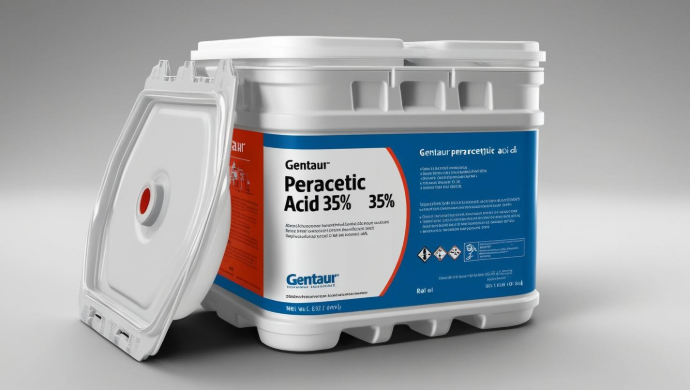* Peracetic Acid 35% : A Powerful Disinfectant for Various Applications
Peracetic acid (PAA) is a strong oxidizing agent widely used for disinfection, sterilization, and sanitation across multiple industries. At a concentration of 35%, it is highly effective against bacteria, viruses, fungi, and spores, making it an excellent choice for industries that require strict hygiene and cleanliness.
* What is Peracetic Acid 35%?
Peracetic acid is an organic compound with the chemical formula C2H4O3. It is a colorless liquid with a strong, vinegar-like odor and is typically a mixture of acetic acid, hydrogen peroxide, and water. The 35% concentration is one of the most potent forms available, providing superior antimicrobial properties.
* Why Choose Peracetic Acid 35%?
If you're looking for a highly effective, eco-friendly disinfectant that outperforms traditional sanitizers, Peracetic Acid 35% is the ideal solution. It offers:
- Rapid microbial action – Eliminates bacteria, viruses, and spores faster than conventional disinfectants.
- Broad-spectrum efficacy – Effective in a wide range of industries, from healthcare to food processing.
- Environmentally safe breakdown – Leaves no toxic residues, breaking down into acetic acid, water, and oxygen.
- Non-corrosive to stainless steel – Safe for industrial equipment, reducing maintenance costs.
- Highly effective even at low temperatures – Works in cold environments, reducing energy costs.
* Uses of Peracetic Acid 35%
- Food & Beverage Industry: Used to disinfect processing equipment, pipelines, and storage tanks. It helps eliminate bacteria and biofilms that can contaminate food products.
- Healthcare & Medical Facilities: Applied for sterilizing surgical instruments, endoscopes, and medical surfaces, ensuring pathogen-free environments.
- Water Treatment: Helps purify drinking water, wastewater, and industrial cooling systems by breaking down organic matter and killing harmful microorganisms.
- Agriculture: Used to disinfect greenhouses, irrigation systems, and food processing equipment to maintain sanitary conditions.
- Pharmaceutical Industry: Essential in cleanroom environments to prevent contamination in drug manufacturing.
- Pulp & Paper Industry: Helps with bleaching processes and microbial control.
* Safety Considerations
- Although peracetic acid is highly effective, it must be handled with care:
- Use protective gloves, goggles, and a mask when handling.
- Work in a well-ventilated area to avoid inhalation of fumes.
- Store in a cool, dark place away from incompatible chemicals like strong bases and reducing agents.
- Follow proper dilution guidelines to ensure safe and effective use.
* Protocol for Using Peracetic Acid 35%
1. Preparation
- Ensure all personnel handling peracetic acid wear appropriate PPE (gloves, goggles, mask, and lab coat).
- Work in a well-ventilated or fume-hood-equipped area.
- Have emergency eye-wash stations and spill management kits ready.
2. Dilution Guidelines
- General disinfection: Dilute 1:100 (e.g., 10 mL peracetic acid in 1 L water).
- Surface sterilization: Dilute 1:50 (e.g., 20 mL peracetic acid in 1 L water).
- Water treatment: Dosage varies; refer to manufacturer recommendations for specific applications.
- Medical sterilization: Typically, a 0.2-0.35% solution is used for cold sterilization.
3. Application
- For surface disinfection: Apply the diluted solution using a spray bottle, cloth, or mop and let it sit for 10-15 minutes before rinsing with sterile water.
- For equipment sterilization: Immerse instruments in the solution for the recommended contact time (typically 15-30 minutes), then rinse thoroughly.
- For water treatment: Introduce the solution as per the specified dose rate, ensuring adequate mixing.
4. Post-Treatment & Disposal
- Thoroughly rinse treated surfaces and equipment with clean water to remove residual acid.
- Dispose of any unused or expired peracetic acid according to local hazardous waste regulations.
- Store remaining solution in a tightly sealed container away from heat and direct sunlight.
